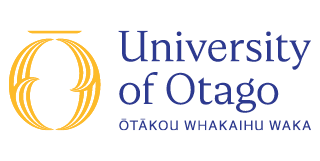Overview
Understand Earth’s formation, evolution and structure using project-based applications of geophysical theory, including seismology, gravitation, magnetics and electromagnetics.
Through acquisition, reduction and interpretation of data from their own local geophysical surveys, students will become familiar with the use of geophysical methods in understanding the near surface. Students will gain field experience with seismic, gravity, magnetic and electrical geophysical techniques. We will utilise Web- and computer-based tutorial sessions for reduction and interpretation of the local surveys. Using the knowledge gained from local practical studies we then examine larger New Zealand and international geophysical data sets to investigate the structure of the Earth generally and specifically the geophysical signatures of petroleum mineral resources.
The second aim of the course is to examine more deep-seated processes that govern the dynamic behaviour of the Earth. We shall investigate the physics of forces that drive core and mantle flow, earthquakes, mountain building and fluid flow. Simple modelling techniques are introduced so that students can perform simulations of the Earth's thermal and mechanical behaviour. Students who complete this course should have a working knowledge of the practical application of geophysical methods at scales appropriate for exploration of mineral resources, evaluation of petroleum basins and also to the larger scales of determination of Earth's structure.
About this paper
| Paper title | Geophysics |
|---|---|
| Subject | Geology |
| EFTS | 0.15 |
| Points | 18 points |
| Teaching period | Semester 2 (On campus) |
| Domestic Tuition Fees ( NZD ) | $1,173.30 |
| International Tuition Fees | Tuition Fees for international students are elsewhere on this website. |
- Prerequisite
- EAOS 111 and/or GEOL 112 and/or PHSI and/or SURV papers, and 72 200-level points from Science Schedule C
- Restriction
- GEOL 261
- Schedule C
- Science
- Eligibility
Background requirements: A basic knowledge of high-school level mathematics and physics will be helpful. GEOL 261 is for students in their second year of a geology or equivalent degree. GEOL 361 is for students in their third year of a geology or equivalent degree.
- Contact
- More information link
- Teaching staff
Co-ordinator: Associate Professor Andrew Gorman
Dr Christian Ohneiser- Paper Structure
Lecture topics are:
- Physics of the Earth (one week)
- Gravity (two weeks)
- Magnetism (two weeks)
- Electromagnetic Methods (two weeks)
- Geophysical Field Methods (one week + 2-day weekend field school)
- Seismic methods (four weeks)
- Geophysical Inversion
Assessment:
Assessment is typically split between internal (ongoing during the semester) and external (final exam).Assessments for GEOL 361 are set and graded differently to GEOL 261 to reflect greater background knowledge and higher expectations of students taking the paper at 300-level.
- Teaching Arrangements
Two lectures and one 3-hour laboratory per week.
Fieldwork: A short weekend field school will be undertaken to gain experience in collecting a range of geophysical data sets. These data will then be analysed during subsequent laboratory sessions.
- Textbooks
- Mussett, A.E. and Khan, M.A. 2000. Looking into the Earth. Cambridge University Press.
- Course outline
https://www.otago.ac.nz/geology/study/otago710548.pdf (previous syllabus indicative of content next time the paper is taught)
- Graduate Attributes Emphasised
- Global perspective, Interdisciplinary perspective, Scholarship, Communication, Critical thinking, Cultural understanding, Ethics, Environmental literacy, Information literacy, Research, Self-motivation, Teamwork.
View more information about Otago's graduate attributes. - Learning Outcomes
Students who successfully complete this paper will have:
- A general awareness of the range of geophysical methods available for understanding the Earth and an understanding of the types of geological targets that can be examined with each technique
- Knowledge of geophysical concepts as applied to the investigation of geological bodies in the subsurface
- Applied geophysical skills in the acquisition of seismic, gravity, magnetic and electrical data sets, along with basic surveying skills for locating such data
- Critical skills needed for evaluating and assessing geophysical data sets
